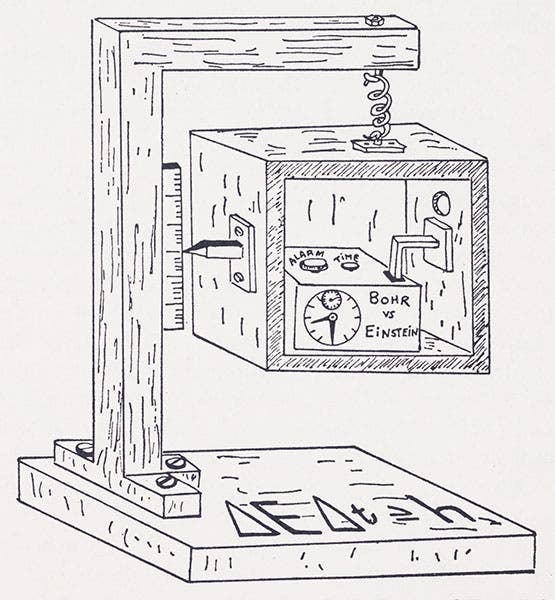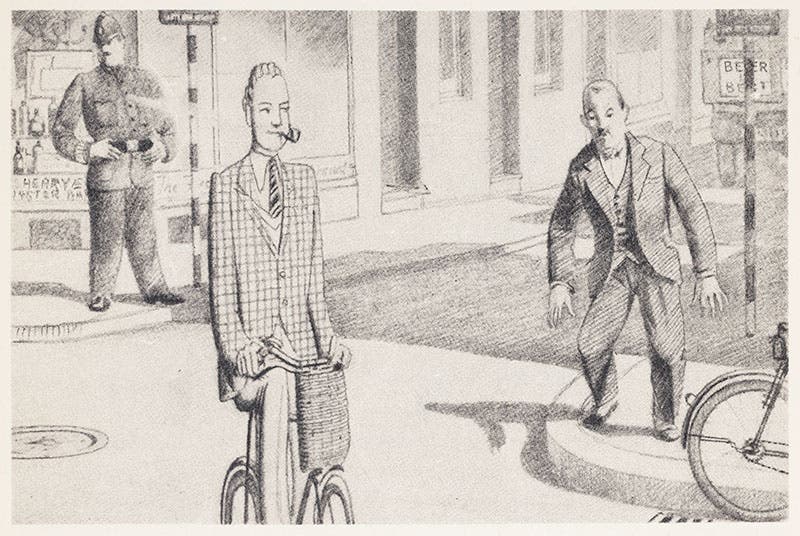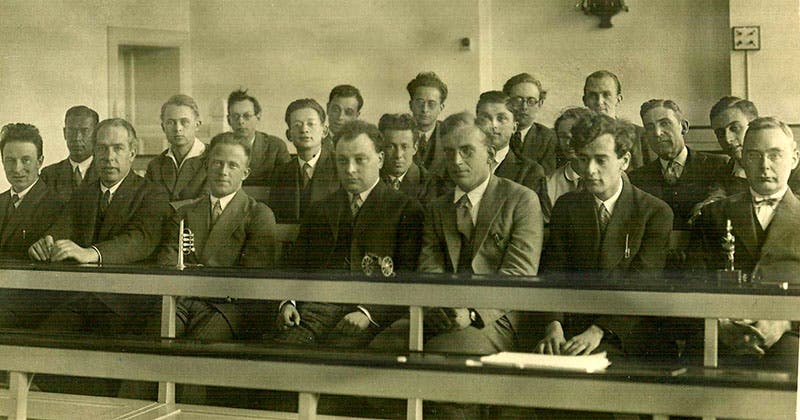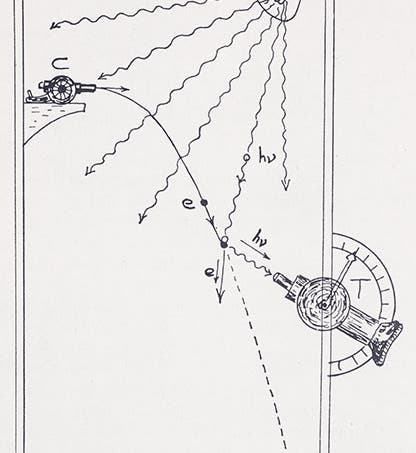Scientist of the Day - George Gamow
George Gamow, a Russian/American nuclear physicist, was born Mar. 4, 1904, in Odessa. He studied in Leningrad until 1929 (where he made his first important discovery, based on Heisenberg’s uncertainty principle, that particles can "tunnel" out of a nucleus from which, by classical physics, they would not have the energy to escape); then he studied with Niels Bohr at his Institute in Copenhagen until 1931. The next year, he was refused permission by the Soviet government to return to Copenhagen. Gamow somehow managed to convince Soviet authorities to let him journey to the Solvay Conference in Brussels in 1933, which he attended with his wife, and he never returned home, moving to the United States in 1934 to take up residence at George Washington University, where he would eventually propose the Big Bang theory of the origin of the elements, and incidentally, the universe, in 1948.

The ultraviolet catastrophe, if energy were music, drawing by Gamow , Thirty Years That Shook Physics, 1966 (author’s copy)
We choose today to highlight a different aspect of Gamow's career - his inclination to write science books for the general public, and to illustrate them with his own, often whimsical, drawings. One, Two, Three … Infinity (1947), and The Creation of the Universe (1952) were extremely popular introductions to the mysteries of cosmology and quantum theory; I read them both many times over when I was young. Gamow also wrote books on relativity and quantum theory for young people, such as Mr. Tompkins in Wonderland (1940) and Mr. Tompkins Explores the Atom (1944).

Diagram of a Bohr thought experiment to demonstrate the uncertainty principle and refute an Einstein thought experiment, drawing by Gamow , Thirty Years That Shook Physics, 1966 (author’s copy)
Later in his career, Gamow wrote a history of quantum theory, Thirty Years That Shook Physics (1966). Ordinarily, when a scientist decides to retire and pursue the history of science, the result is disastrous, but Gamow's entry into the field was both delightful and insightful; although he himself only experienced the last ten of those thirty years, he did contribute significantly to the shaking of the tree of physics, with his discovery of the tunneling effect.

A foreshortened cyclist viewed by bystanders, if the speed of light were small, drawing by Gamow, Mr. Tompkins in Wonderland, 1940 (author’s copy)
We show here Gamow drawings from two of his books. From Thirty Years that Shook Physics, we see a Gamow diagram of the Heisenberg uncertainty principle, showing how the act of measuring a particle's momentum changes its position (first image); a clever variation on the ultraviolet catastrophe, as if it were true of piano keys (second image); and a diagram of an ideal experiment proposed by Niels Bohr, to shoot down a thought experiment devised by Albert Einstein to confute the uncertainty principle, to which Einstein strongly objected (third image).

The surroundings viewed by a cyclist if the speed of light were small, drawing by Gamow, Mr. Tompkins in Wonderland, 1940 (author’s copy)
The other two drawings come from Mr. Tompkins in Wonderland, where the velocity of light is very small, so the relativistic effect shows up at small speeds, and a bicyclist would appear to bystanders to be squashed in the direction of his pedaling (fourth image). To the cyclist, however, it is the rest of the world that appears to be foreshortened (fifth image)

Participants at the 1930 Copenhagen conference; the central five in the front row are, from left, Niels Bohr, Werner Heisenberg, Wolfgang Pauli, George Gamow, and Lev Landau (medium.com)
Our photograph (sixth image) was taken at the 1930 quantum physics conference in Copenhagen, where the front row includes a most impressive array of talent; the central five are, from the left: Bohr, Werner Heisenberg, Wolfgang Pauli, Gamow, and Lev Landau.
Dr. William B. Ashworth, Jr., Consultant for the History of Science, Linda Hall Library and Associate Professor, Department of History, University of Missouri-Kansas City. Comments or corrections are welcome; please direct to ashworthw@umkc.edu.






